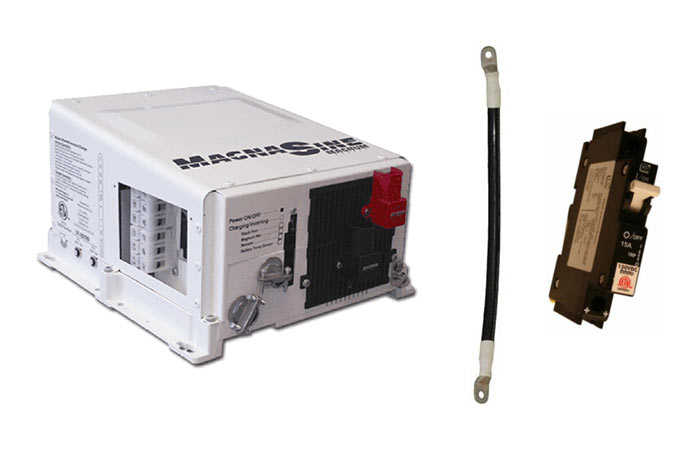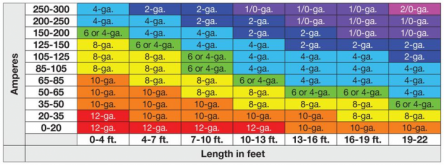Terrapin
New Member
I did find a few posts on how to calculate the amperage draw off a 12 bank to run inverted 110-120v loads but I am math challenged, dyscalculia to be honest. It makes some of this just very difficult. And when it comes to fuses, well pride be damned. I am just going to ask for the help.
Can someone dial me in on running an inverter rated at 2200W/4400peak. Shutoff is rated at 2200 to 2500w output. Documentation does not mention efficiency so a safe conservative guess is welcome. (It is a Giandel 2200W Pure sine if that matters) I am simply looking to know what the max amp draw out of the battery bank will be to see what wires/Anderson connectors/breakers will meet the needs of this inverter.
I am still working on the logistics of protecting the battery from being over discharged. For now it will be monitored closely.
And yes, I understand this is really pushing 12V and 24 should be the choice, but the entire trailer and onboard converter is 12v based and will need to stay that way. Max use of the system will be fleeting perhaps a max 10 min runtime of a microwave and pretty rare, but I want it available on demand to make the Mrs. happy. All other 12V loads will have a separate battery with breakers and wiring based on the BMS abilities.
Can someone dial me in on running an inverter rated at 2200W/4400peak. Shutoff is rated at 2200 to 2500w output. Documentation does not mention efficiency so a safe conservative guess is welcome. (It is a Giandel 2200W Pure sine if that matters) I am simply looking to know what the max amp draw out of the battery bank will be to see what wires/Anderson connectors/breakers will meet the needs of this inverter.
I am still working on the logistics of protecting the battery from being over discharged. For now it will be monitored closely.
And yes, I understand this is really pushing 12V and 24 should be the choice, but the entire trailer and onboard converter is 12v based and will need to stay that way. Max use of the system will be fleeting perhaps a max 10 min runtime of a microwave and pretty rare, but I want it available on demand to make the Mrs. happy. All other 12V loads will have a separate battery with breakers and wiring based on the BMS abilities.





